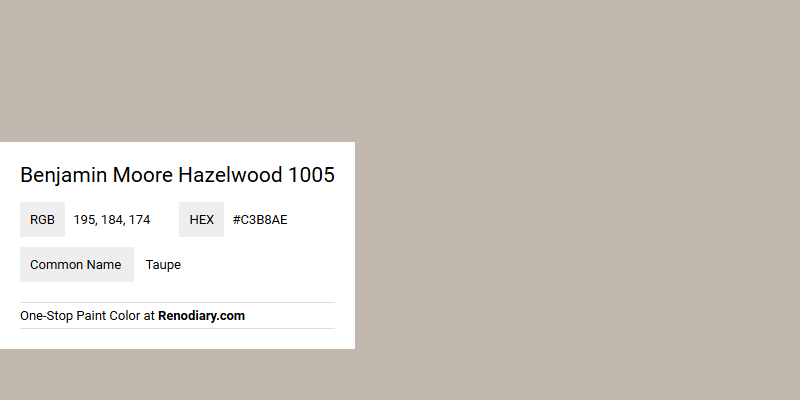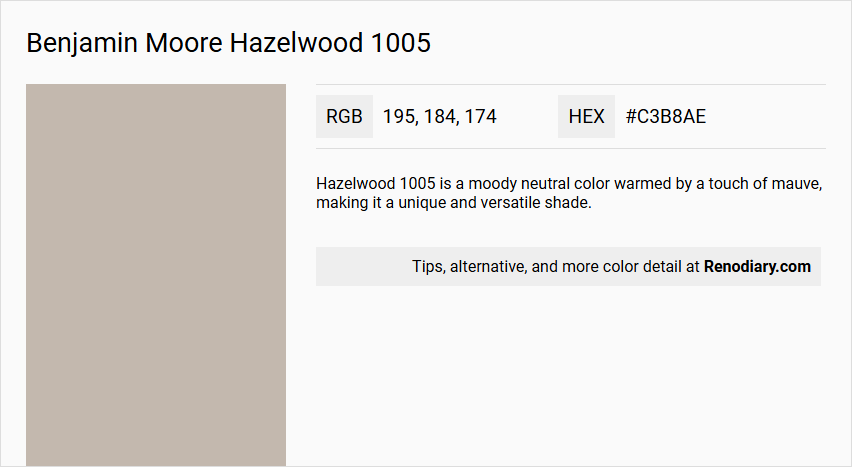
Benjamin Moore's Hazelwood 1005 is a sophisticated taupe that embodies a versatile blend of warm and cool undertones. With an RGB composition of 195, 184, 174, this color offers a balanced and neutral appearance, making it an ideal choice for various interior design styles. Its adaptability allows it to harmonize effortlessly with both contemporary and traditional décor, providing a sense of coziness and understated elegance.
Color Description
Hazelwood 1005 is a moody neutral color warmed by a touch of mauve, making it a unique and versatile shade.
Undertones
This color has subtle hints of beige and taupe undertones, which add depth and dimension, allowing it to adapt well to different lighting conditions.
Color Values
The Light Reflectance Value (LRV) of Hazelwood 1005 is 48.88, indicating a moderate level of light reflectance.
Usage
Hazelwood 1005 is suitable for interior use on new or previously painted surfaces such as wallboard, plaster, masonry, and wood. It is available in an eggshell finish for testing and can be used with or without a primer due to its self-priming feature.
Atmosphere
The color creates a sophisticated and elegant atmosphere, fitting well within the Benjamin Moore Classics® collection. It is described as timeless and elegant, making it suitable for various interior design styles.
Benjamin Moore Hazelwood 1005 Color Alternative
Benjamin Moore Hazelwood 1005 offers a unique and sophisticated hue that serves as a timeless base for any design scheme. Dulux Bitter Chocolate 4 50YR 47/057, Little Greene Rolling Fog 143, and Farrow and Ball Purbeck Stone 275 are excellent color alternatives that bring distinct vibrancy, each with its own subtle nuances and depth. Embracing any of these shades alongside Benjamin Moore Hazelwood 1005 can create a beautifully layered palette that enhances both contemporary and classic spaces.
Bathroom
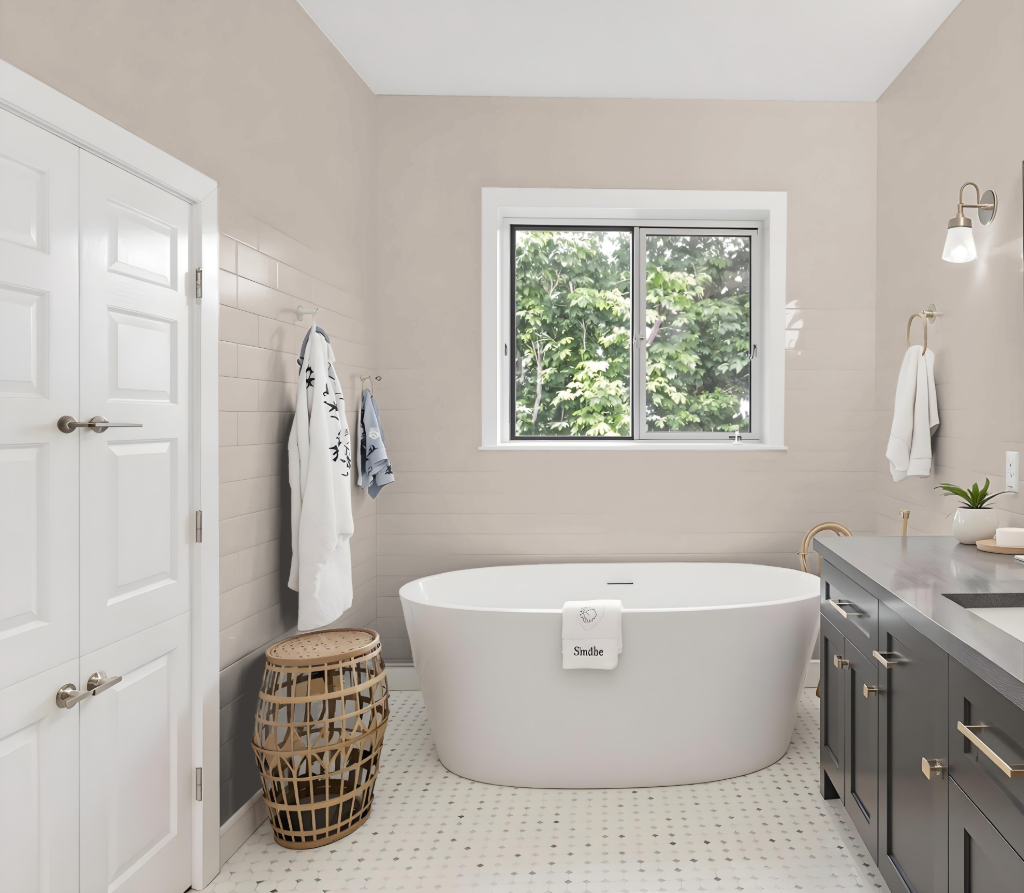
Benjamin Moore Hazelwood 1005 stands out as a sophisticated bathroom color, delivering a balanced backdrop that enhances both cozy retreats and sleek, modern designs. Its mid-tone quality creates a harmonious interplay between brightness and warmth, ensuring a pleasant ambiance regardless of the lighting conditions.
The color pairs beautifully with rich textures and metallic accents to achieve an elevated, luxurious look, and it harmonizes well with complementary shades for either contrasting highlights or a unified, monochromatic scheme. This adaptability makes Hazelwood 1005 an excellent choice for anyone aiming to create a refined, welcoming space in their bathroom.
Bedroom
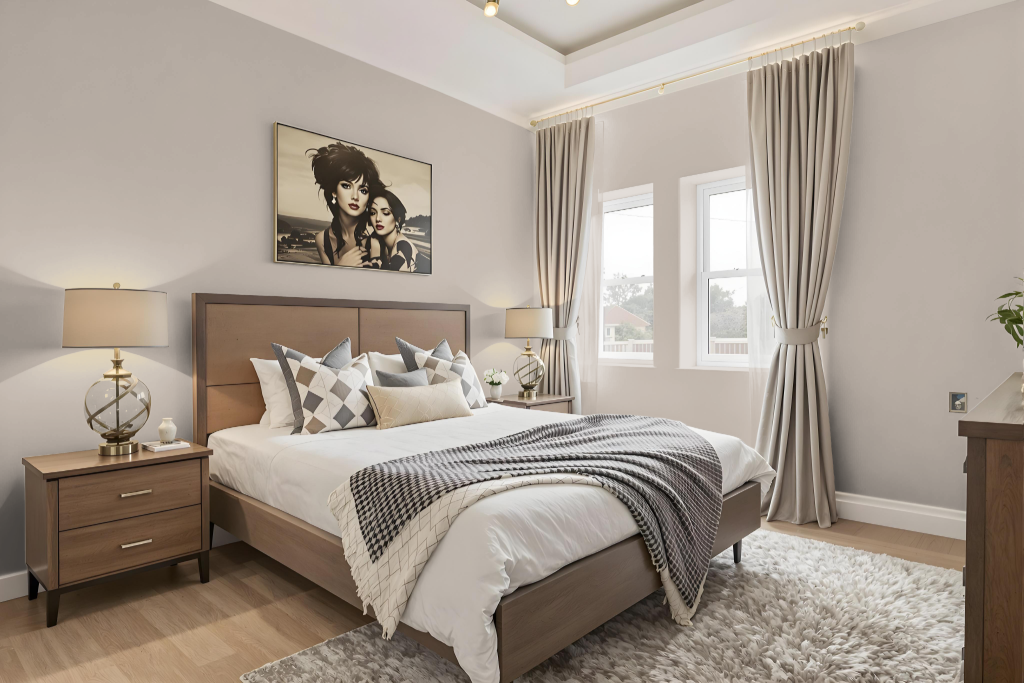
For a bedroom, Benjamin Moore Hazelwood creates an inviting and balanced space that gracefully blends warmth with a refreshing brightness. Its moderate light-reflecting quality helps achieve a setting that is both cozy and light-filled.
To enhance this ambiance, complementary colors such as Nimbus Gray and Providence Blue can be introduced to add a vibrant visual twist, while a subtle monochromatic approach using varying tones of Hazelwood deepens the overall look. Accent hues like Athena, Seapearl, and New London Burgundy can further enrich the space by adding layers of depth and interest.
Kitchen
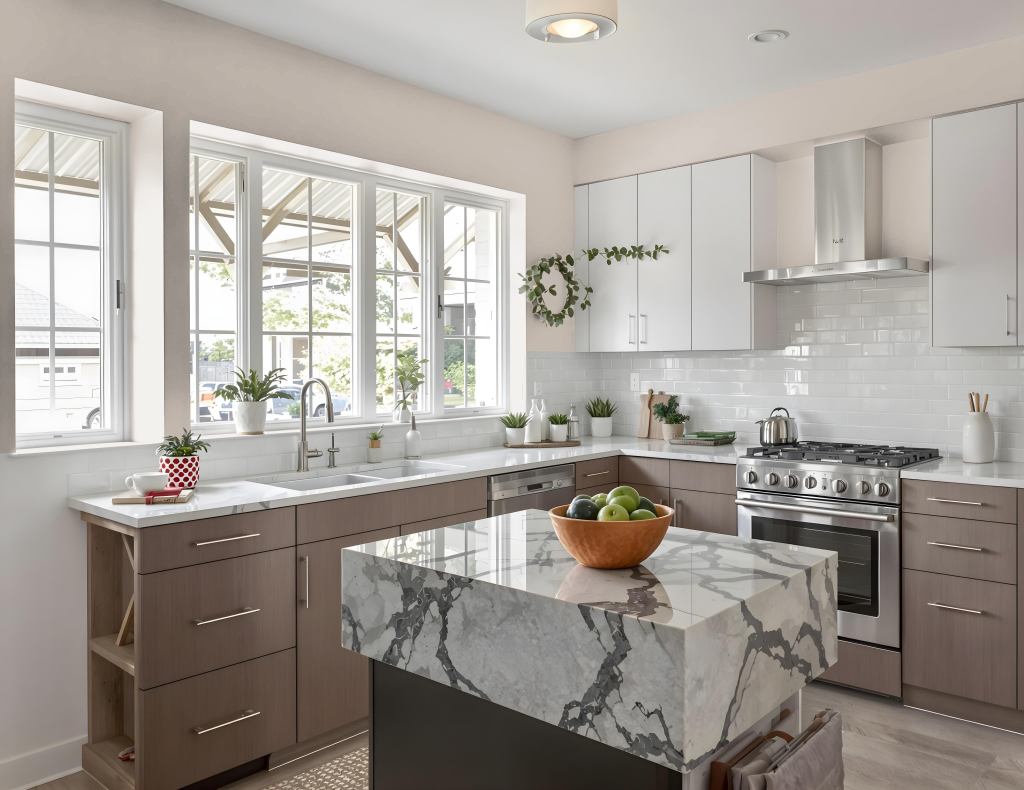
For a kitchen color scheme, Benjamin Moore Hazelwood 1005 introduces a warm, inviting feel that serves as a vibrant foundation. It pairs beautifully with cooler tones, such as Benjamin Moore 858 Athena—a soft, sophisticated gray—which creates a balanced contrast and modern appeal. Accents like metallic finishes and rich textures further enhance the luxurious atmosphere.
Complementing this palette with hints of green, including shades found in Benjamin Moore Nimbus Gray or Providence Blue, adds depth and visual dynamism. This carefully curated blend of hues and textures results in a lively, contemporary space perfect for both culinary creativity and relaxed gatherings.
Living Room
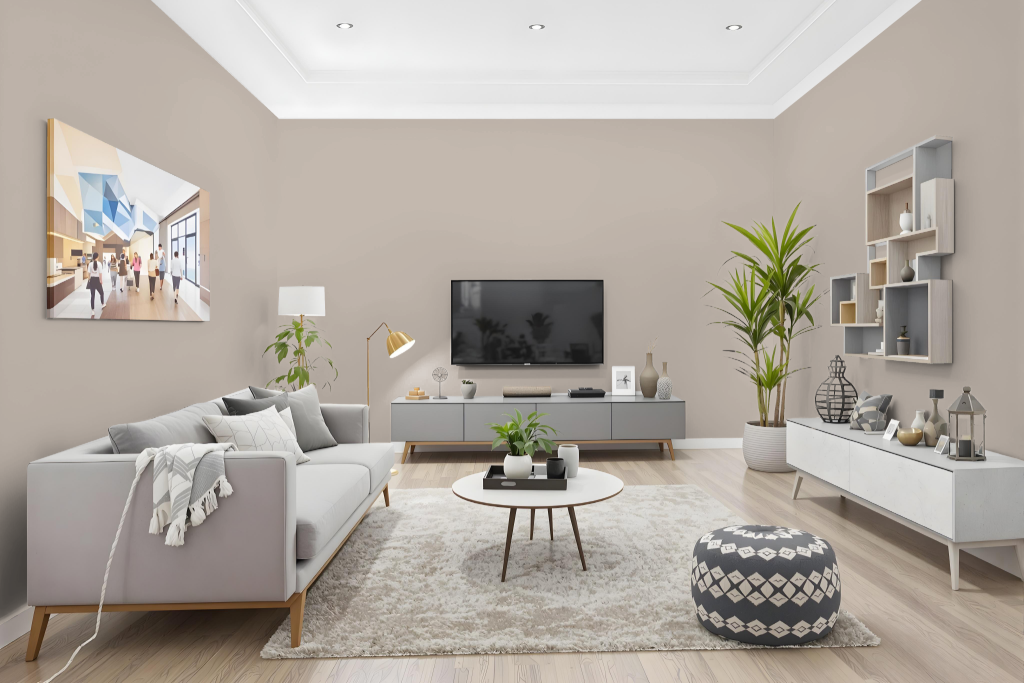
Benjamin Moore Hazelwood 1005 is a sophisticated living room paint that infuses warmth and elegance into the space. Its moderate reflectivity provides a balanced brightness, making it an excellent backdrop for both contemporary and upscale interiors.
Belonging to the Benjamin Moore Classics collection and also recognized as North Hampton Beige AC-38, this color pairs beautifully with coordinating shades such as Athena (858), Seapearl (OC-19), and New London Burgundy (HC-61). Additionally, it works harmoniously with green-inflected tones like Nimbus Gray and Providence Blue, while also complementing rich textures and metallic accents for a stylish, dynamic look.
Outdoor
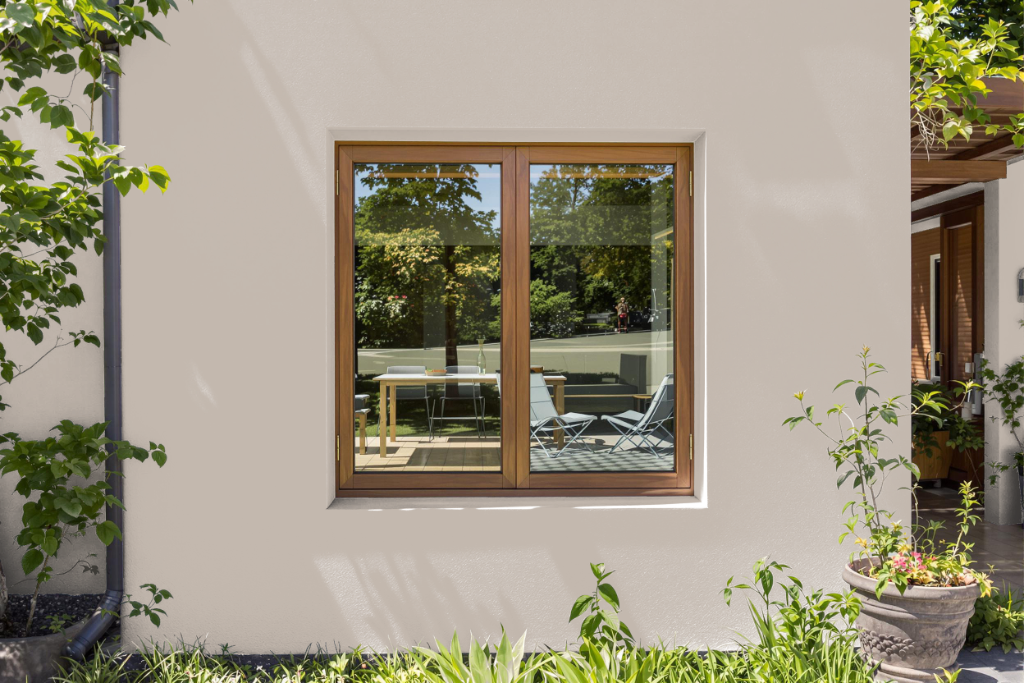
Benjamin Moore's Hazelwood 1005 serves as an attractive option for home outdoor color when chosen with appropriate exterior conditions in mind. Although often reserved for interiors, it can be adapted for exterior use by selecting Benjamin Moore’s exterior paint lines that are engineered to resist fading, mildew, and weathering while accommodating a range of sheens and application temperatures.
Given its moderate light reflectance value, applying proper primer and careful painting techniques is essential, particularly in areas exposed to severe weather conditions. By using well-formulated exterior products, homeowners can confidently extend the use of Hazelwood 1005 to outdoor projects, ensuring durability and lasting appeal.
